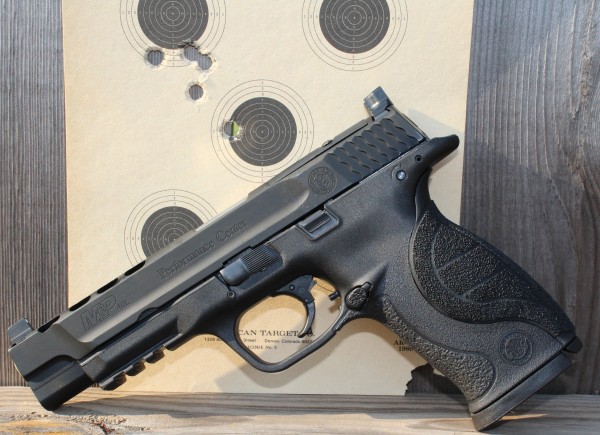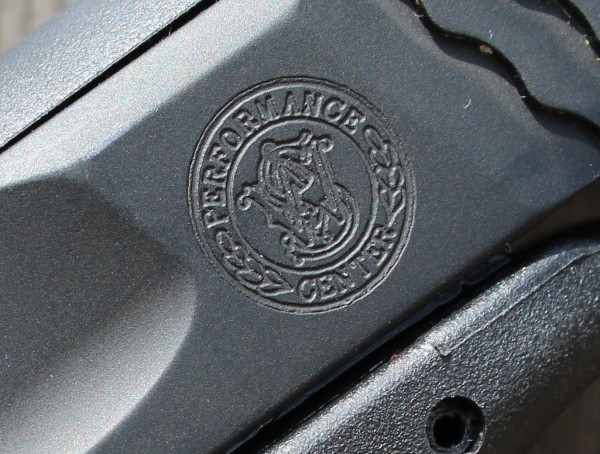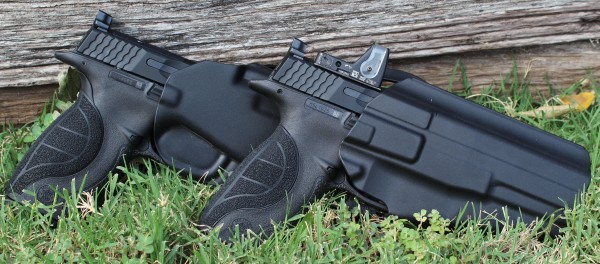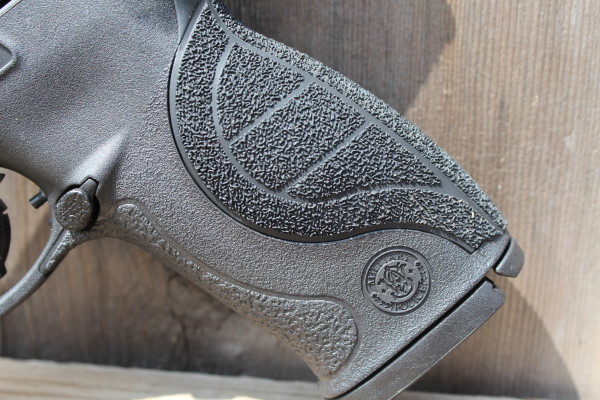
I bought my first Smith & Wesson M&P autopistol in 2008 and currently have five of them excluding the M&P40c my wife hijacked some years ago. I carried that original M&P40 on regular duty and SWAT for several years. However, Smith & Wesson just wasn’t satisfied with a good thing. After the standard duty size models became successful, then the compacts were introduced. The Competition Optics Ready Equipment (CORE) models represent another step forward for the M&P line. They allow for the mounting of optics on the standard and longer slide models. Most recently, the long slide versions hit the market. But, it doesn’t stop there. The S&W Performance Center makes both functional and aesthetic enhancements to otherwise stock handguns. So, the natural next step in the evolution of the M&P is the Performance Center line of pistols.

Features
The Performance Center works its magic on the sear, ram and a few other parts to make the trigger on the M&PL PC noticeably smoother and lighter, but still very suitable for a duty pistol. The trigger on this test gun measured 5.3 pounds. It’s quite an improvement over the already decent stock pull. There is the usual amount of, “take-up” or “slack” and then a very smooth break. It has an adjustable trigger stop which means overtravel is all but non-existent. We tested the five-inch barrel PC, which is ported to reduce muzzle flip. The Performance Center is also available with the standard 4.25″ barrel. The M&P Performance Center pistol is a CORE, which means it will accept optics such as the Trijicon RMR, Leupold Delta Point, J Point, Doctor, C-More STS and Insight MRDS while still allowing for co-witnessing with the iron sights. Eotech also makes a MRDS which will mount and work well on CORE pistols, but it will not co-witness with the sights. This pistol weighs just under 25-ounces unloaded and right at 36-ounces when loaded with a full 15-round magazine of Federal 155-grain HST’s.
Of course, it has all the usual M&P features: three different sizes of back straps, directional cocking serrations, rounded edges for easier holstering and manipulation, beveled magazine well, extended grip tang and two steel magazines. Right out of the box, you’re ready for home defense, competition or carry.

Duty Gear
Holster companies are working on new designs to accommodate M&P’s with attached optics for law enforcement. Safariland, Blackhawk! and Blade-Tech already have solid, yet affordable Kydex offerings that would be great for duty, range or plain clothes use. There are even a few concealed carry options out there. Will there be more to follow?

Live Fire
The first thing I noticed during live fire with the M&P40L PC was noticeably reduced recoil as compared to non-ported guns. That is an issue of ever-increasing importance as I catch my first glimpses of decrepitude in my shoulders, elbows and wrists. I used two of my favorite .40 caliber defensive loads for the test this pistol: The Corbon 150-grain JHP and the Federal 155-grain HST. Their average velocities were 1233 feet per second and 1141 feet per second; respectively. The velocity increase of the Corbon was evident in recoil and report. Still, I was able to manage a five-shot, 2.2″ group with the Corbon at 25-yards from a sandbag. That’s a pretty tight cluster for a plastic gun. The standard deviation of this loading was an incredible 8.31. All in all, we shot about 250 rounds of a mixture of American Eagle 180-grain FMJ and the two loads mentioned above without issue. Frankly, after years of experience with several M&P pistols, I would have been shocked if this gun had choked with quality ammunition from any manufacturer. Just to be certain, I took the pistol to Operation Specific Training’s Practical Fundamentals course (more on that in another issue). Over two days, I fired 635 more rounds through the PC. The pistol performed perfectly. The shooter, however, could use a trip to the Performance Center.
One real negative of ported pistols is that firing from retention can be downright painful as the gases exit the ports upward. It’s a bit of a jolt to the senses. That is especially true with the .40 caliber. If that is an issue for you, consider the Pro Series which does not have the porting.

Never Satisfied
I kept a rough round count on my first M&P40 duty gun for a while. At approximately the 7,000 round mark, I preemptively replaced the recoil spring and guide per the manual. That is the only part which has been replaced on any of my five M&P pistols. There have been exactly two stoppages out of those pistols; one was a weak reload. I was perfectly satisfied with my M&P’s and never really thought there was a lot of room for improvement until the Performance Center models were introduced. After spending some time with this PC, I’ve come to appreciate the enhancements.



Great report, but my lack of interest in the M&P line (and particularly the 9mm varaints) has to do with what appears to be the reality of 1) Staying away from the 9mm variants due to systemic accuracy issues, and 2) having to go to such an “upscale” (and commensuerately up-priced) Performance Center variant, or plunging into the aftermarket cottage industry (such as Apex) to get a decent triggerpull from the onset. These, and what I’ve witnessed as continuous manufacturing and quality control issues in this platform throughout it’s lifespan to date have served to poison this particular well for me.
That’s unfortunate, because the M&P has some pretty decent ergos going for it, and the aftermarket sight industry has long provided some excellent sighting options. However, for me, my striker-fired comittment will remain with my Glocks and HK VP.
Best, Jon